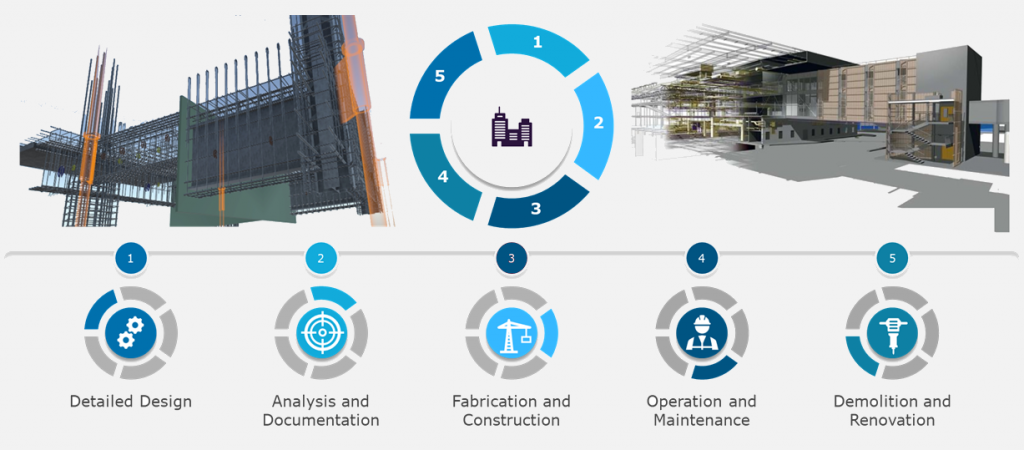Introduction to BIM
The architecture, engineering, and construction (AEC) industry has long searched different techniques to decrease project cost, increase productivity and quality, and reduce project delivery time. Building information modeling (BIM) offers a technique to achieve these objectives. BIM simulates the construction project in a virtual environment. With BIM technology, an accurate virtual model of a building, known as a building information model, is digitally constructed. When completed, the building information model contains precise geometry and relevant data needed to support the design, procurement, fabrication, and construction activities required to realize the building. After completion, this model can be used for operations and maintenance purposes.

BIM can be viewed as a virtual process that encompasses all aspects, disciplines, and systems of a facility within a single, virtual model, allowing all design team members (owners, architects, engineers, contractors, subcontractors, and suppliers) to collaborate more accurately and efficiently than using traditional processes.
Applications of Building Information Modeling
A building information model can be used for the following purposes:
- Visualization: 3D renderings can be easily generated in house with little additional effort.
- Fabrication/shop drawings: It is easy to generate shop drawings for various building systems.
- Code reviews: Fire departments and other officials may use these models for their review of building projects.
- Cost estimating: BIM software has built-in cost estimating features. Material quantities are automatically extracted and updated when any changes are made in the model.
- Construction sequencing: A building information model can be effectively used to coordinate material ordering, fabrication, and delivery schedules for all building components.
- Conflict, interference, and collision detection: Because building information models are created to scale in 3D space, all major systems can be instantly and automatically checked for interference.
- Forensic analysis: A building information model can be easily adapted to graphically illustrate potential failures, leaks, evacuation plans, and so forth.
- Facilities management: Facilities management departments can use it for renovations, space planning, and maintenance operations.

Benefits of Building Information Modeling
- The key benefit of a building information model is its accurate geometrical representation of the parts of a building in an integrated data environment
- Faster and more effective processes: Information is more easily shared and can be value-added and reused.
- Better design: Building proposals can be rigorously analyzed, simulations performed quickly, and performance benchmarked, enabling improved and innovative solutions.
- Controlled whole-life costs and environmental data: Environmental performance is more predictable, and lifecycle costs are better understood.
- Better production quality: Documentation output is flexible and exploits automation.
- Automated assembly: Digital product data can be exploited in downstream processes and used for manufacturing and assembly of structural systems.
- Better customer service: Proposals are better understood through accurate visualization.
- Lifecycle data: Requirements, design, construction, and operational information can be used in facilities management.
Upon study of different BIM implemented projects, following benefits were found
- Up to 40% elimination of un-budgeted change,
- Cost estimation accuracy within 3% as compared to traditional estimates,
- Up to 80% reduction in time taken to generate a cost estimate,
- A savings of up to 10% of the contract value through clash detections, and
- Up to 7% reduction in project time.
Conclusion
The next era of planning and design will be the building information modeling. It integrates all components of a building in one model. You can design and integrate a building architecture, structure and MEP using building information modeling. Many software are available for BIM such as Autodesk Revit.
Read Also: Introduction to Autodesk Revit Software




Sir how we can get in touch with u to explore more about building information modeling
This is very valuable information TMT bar manufacturers in Chennai.